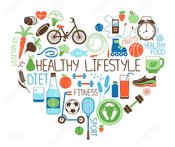NUTRITION DEPARTMENT
The mission of the Quitman County School Nutrition Program is to be an integral part of the education process of Quitman County Schools by providing students with nutritious meals and nutrition education experiences that promote healthy children who are ready to learn.
ABOUT US
The Quitman County Schools Nutrition Program includes a team of Administrators and Staff who strive to prepare and serve healthy, quality meals to our students.
BENEFITS TO CHILDREN
The National School Food and Nutrition Program is to provide a nutritious breakfast and lunch to children. The program supplies free or reduced priced breakfasts, lunches, afterschool snacks, and other federal grant program meals to economically deprived children. It meets at least two-thirds the recommended daily dietary allowances, helps develop sound food habits, and is a most extensive program in applied nutrition. It helps build alert and healthy citizens.
OPERATIONS
The School Food and Nutrition Program is operated in accordance with the regulations of the School Breakfast Program and the National School Lunch Act and the regulations of United States Department of Agriculture. The source of funding for the School Food and Nutrition Program include sales income, federal aid from various sources, State of Georgia, and USDA donated food.
We are held accountable to the Quitman County Schools Superintendent,
Mr. Jon Erik Jones
STAFF
- Jada Bone, School Nutrition Director
- Gwinetra Starks, Food Assistant
- Loretta Respress, Food Assistant
- Latonia Marshall, Food Assistant
- Patricia Hope, Food Assistant
GOALS & OBJECTIVES
- Provide attractive, nutritious, well-balanced meals to every child and staff member in the Quitman County School System following the USDA requirements.
- Provide use of the school cafeteria and kitchen as an educational laboratory by making use as a learning tool.
- Involve students in menu planning and other appropriate school nutrition activities.
- Provide nutrition education materials for classroom teachers to use in the classroom.
- Positively promote the School Nutrition Program to school and community.
- Prepare and serve breakfast, lunch and snack meals to as many school children as possible. (Healthy Children Ready To Learn)
- Provide fruit and vegetable snacks according to the grant program requirements to elementary school students at least three times a week.
- Operate a summer nutrition program to service students in a summer school academic program at the schools and to the community.
In accordance with federal civil rights law and U.S. Department of Agriculture (USDA) civil rights regulations and policies, this institution is prohibited from discriminating on the basis of race, color, national origin, sex (including gender identity and sexual orientation), disability, age, or reprisal or retaliation for prior civil rights activity.
Program information may be made available in languages other than English. Persons with disabilities who require alternative means of communication to obtain program information (e.g., Braille, large print, audiotape, American Sign Language), should contact the responsible state or local agency that administers the program or USDA’s TARGET Center at (202) 720-2600 (voice and TTY) or contact USDA through the Federal Relay Service at (800) 877-8339.
To file a program discrimination complaint, a Complainant should complete a Form AD-3027, USDA Program Discrimination Complaint Form which can be obtained online at: https://www.usda.gov/sites/default/files/documents/USDA-OASCR%20P-Complaint-Form-0508-0002-508-11-28-17Fax2Mail.pdf, from any USDA office, by calling (866) 632-9992, or by writing a letter addressed to USDA. The letter must contain the complainant’s name, address, telephone number, and a written description of the alleged discriminatory action in sufficient detail to inform the Assistant Secretary for Civil Rights (ASCR) about the nature and date of an alleged civil rights violation. The completed AD-3027 form or letter must be submitted to USDA by:
1. mail: U.S. Department of Agriculture Office of the Assistant Secretary for Civil Rights 1400 Independence Avenue, SW Washington, D.C. 20250-9410; or
2. fax: (833) 256-1665 or (202) 690-7442; or
3. email: program.intake@usda.gov
This institution is an equal opportunity provider.
CONTACT & STAFF
School Nutrition Director
229-310-7037
NUTRITION INFORMATION
Ala` Carte Prices
Limited English Proficiency
Student Special Dietary Medical Forms
Smart Snacks
Parent Information
Summer Feeding Information
Wellness Information & Policy
The Quitman County School Nutrition Department is committed to promoting the health of our students and addressing the growing problem of childhood obesity. Our wellness policy addresses the unique needs of our local school district and the students we serve.
A local school wellness policy is a written document of official policies that guide a local educational agency (LEA) or school district’s efforts to establish a school environment that promotes students’ health, well-being, and ability to learn by supporting healthy eating and physical activity. (Credit: https://www.fns.usda.gov/school-meals/local-school-wellness-policy)
Please contact Nutrition Services if you would like to participate on the wellness committee, nominate an individual to serve on the wellness committee, or if you have questions, comments, or suggestions related to Quitman County’s Wellness Policy and Program.
HEALTHIER SCHOOL MEALS
Your child’s school day just got healthier! School lunches now include more fruits, vegetables, and whole grain-rich foods; only fat-free or low-fat milk; “right-size” meals with portions designed for a child’s age; and less saturated fat, trans fat and sodium. The changes in school meals, the first in 15 years, are based on the latest nutritional guidelines.
Here are some important facts about the new school meals:
- The new school lunch provides 1/3 of the average daily calorie needs for kids by age.
- Some highly active students, like athletes, may need more calories. Some schools may offer second helpings of fruits and vegetables. A second carton of milk may also be an option. Schools can also operate after-school snack and supper programs. Students and/or sports teams can also bring food from home.
- In practice, many students are being served the same amounts of protein as before under the new standards.
Your child can learn good habits for life by making healthy food choices and getting proper exercise now. This year is a transition year as schools implement these new standards and work together with parents, to ensure that every child, in every community across America, has access to healthy and nutritious meals. Encourage them to try new foods and eat the healthy food offered. Reinforce healthy eating by offering similar new foods at home.
Keep updated on the changes at www.fns.usda.gov/healthierschoolday

HEALTHY CHOICE
Are school meals healthy? Myths and stereotypes abound, but the facts are clear when it comes to meals served through the National School Lunch Program: school meals are nutritious and an important part of addressing the childhood obesity epidemic.
What do “school meals” consist of? Know the facts!
Oftentimes, people do not know the most primary fact about foods offered at school during the day. There are essentially two types of foods offered in school cafeterias during the school day. Meals served through the federally funded USDA National School Lunch Program (NSLP) and School Breakfast Program (SBP), and basically all other foods that are not.
Meals served through NSLP and SBP are required to meet national nutrition standards by federal law. In return, schools receive reimbursement for each meal served. All other foods are typically served through vending machines, a la carte foods, fundraisers, class parties, etc. These foods, often known as “competitive foods” because they compete with NSLP and NSBP, are not required to meet federal law. However, they are also increasingly being subject to local, county and state laws that require nutrition standards.
Below are several popular misconceptions about school meals and the truth behind the myths.
Myth #1: School meals make children obese.
Fact: Students that eat meals served through the National School Lunch Program are more likely to be at a healthy weight. Research published in the August 2003 issue of Archives of Pediatric and Adolescent Medicine concluded that “girls in food insecure households had significantly reduced odds of being at risk of overweight if they participated in the [National School Lunch, School Breakfast and Food Stamp Programs].” The research highlights the importance of food assistance programs to low-income children not only in addressing hunger “but also in potentially protecting them from excess weight gain."
Myth #2: Schools serve junk food for school lunch.
Fact: Meals served under the National School Lunch Program (NSLP) must, by federal law, meet nutrition guidelines based on the Dietary Guidelines for Americans. No more than 30% of calories can come from fat and less than 10% from saturated fat. School lunches provide one-third of the Recommended Dietary Allowances of protein, Vitamin A, Vitamin C, iron, calcium and calories. These guidelines apply over the course of one week of school lunch menus. The 2001 School Nutrition and Dietary Assessment II (SNDA II) study based on research by the U.S. Department of Agriculture during the 1998-1999 school year found that students in 91% of secondary schools and 82% of elementary schools had the opportunity to select lunches that were consistent with dietary standards for fat and saturated fat.
Myth #3: Schools don’t serve enough fruits or vegetables for lunch.
Fact: According to the School Nutrition Dietary Assessment II, roughly two-thirds of all school lunch menus offer more than the required two fruit and vegetable choices set by United States Department of Agriculture regulations. The 2003 School Foodservice and Nutrition Operations Survey conducted by SNA found that fresh fruits and vegetables are offered daily in 85% of high schools. Furthermore, salad bars are offered on a daily basis in over half of districts (at least one school per district) in the country. Vegetarian options are served in over 30% of middle schools and high schools around the country, according to the 2005 SNA Operations Survey Report.
Myth #4: Schools serve fried, greasy foods.
Fact: Schools may serve French fries, chicken nuggets or pizza at times. However, because the meals are always required to meet the Recommended Dietary Allowances, the foods still meet required nutrition standards, including fat and saturated fat. This is because they are often baked, not fried, made with low-fat or lean ingredients, and served with vegetables, fruit and other options that make each meal balanced and nutritious.
Myth #5: Sack lunches from home are better than school meals.
Fact: Research by Dr. Alice Jo Rainville of Eastern Michigan University concluded that students who eat school lunches consume less calories from fat than students who bring their lunch from home. Furthermore, the research found school lunches contain three times as many dairy products, twice as much fruit and seven times the vegetable amounts as lunches brought from home.
Myth #6: Soda is served with school lunch.
Fact: Federal law prohibits the sale of soda as a Food of Minimal Nutritional Value (FMNV) in the cafeteria during the school lunch period. State and local regulations may further prohibit the sale of soda before or after the lunch period or in other locations on the school campus.
Myth #7: Only junk food is available through a la Carte lines and vending machines.
Fact: While few federal nutrition standards exist for a la Carte and vended foods and beverages, school nutrition professionals are an active part of the national trend at the state and local levels to implement nutrition standards these items. School nutrition professionals help set nutrition policies at the local level through their state, county and local governments. Through federally mandated Local School Wellness Policies, school nutrition professionals are joining with parents, students and other school stakeholders to set nutrition guidelines for all foods and beverages sold on school campuses.
Myth #8: What is served at schools is out of my control.
Fact: You can become active in setting policies at the local level! Join your local school board, write a letter and voice what you think schools should offer students. Wellness is a community effort and needs the support of the entire community. School nutrition professionals are committed to providing safe and nutritious meals to all children. Parents are encouraged to visit their student’s cafeteria, try a lunch and talk to their school food service director about the nutritional profile of foods served.

